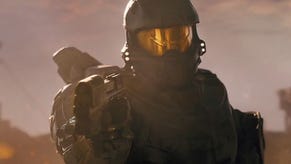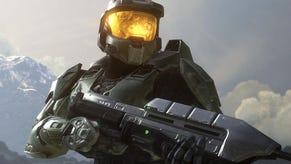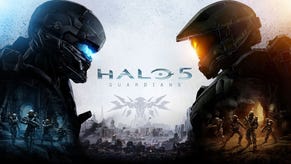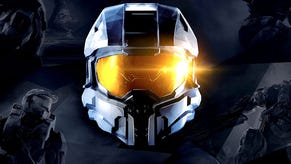Halo 5: Guardians Xbox One Review: Three in One
One of the most-anticipated Xbox One titles of the year has finally arrived. Just how good is it?
This article first appeared on USgamer, a partner publication of VG247. Some content, such as this article, has been migrated to VG247 for posterity after USgamer's closure - but it has not been edited or further vetted by the VG247 team.
Since Halo 5: Guardians is essentially a game of three parts, I'm going to split this review into sections covering each of its components: Campaign, Arena, and Warzone. First up comes the Campaign…
…and that's where I'm the most ambivalent about the game. That might sound like I'm coming out swinging with a negative statement, but ambivalence is a state of mixed feelings, and that's exactly what playing through the Campaign's 15 missions left me with.
Campaign Mode
Starting from the top, Halo 5 features a dual-storyline structure with an ensemble cast. Firstly, there's the Blue team, which consists of Master Chief Petty Officer John-117 and his trio of teammates, Kelly-087, Linda-058 and Fred-10. They're on a mission to… well, I'm not going to give away any spoilers here, other than to say that they soon abscond from the mission that they're on and go AWOL for some very good reasons. When this happens, another team is sent after them to find out what's going on and bring them back home. And that's where we introduce the other half of the story, Fireteam Osiris, which is headed by newly minted Spartan, Agent Locke, and his three sidekicks Edward Buck, Holly Tanaka and Olympia Vale.
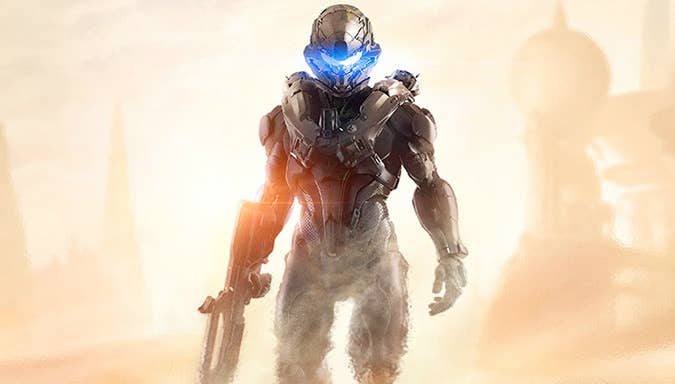
As the Campaign's missions unfold, the storyline switches between the actions of the two teams, and the bifurcated tale slowly, but surely begins to wind in on itself and come together. It's a quite convoluted yarn, and one whose finer details didn't always make a whole lot of sense to me – but then I don't follow the Halo comics, books and digital series from which many of the characters are drawn. Had I read and watched them, I'm sure I'd have a better understanding of who these people are, their history together, and their motivations. The game seems to assume that you already know about these things, but does at least offer some very well voiced expositional banter between the characters that helps fill in some of the details.
Regardless, most of the storyline seems to be a justification for a whole lot of ass kicking, and that's okay in my book. So let's move onto the action, which is definitely a lot more clear-cut than the storyline.
Campaign plays out either as a single-player game with three AI bots, or co-operatively drop-in/drop-out with online friends, and starts with an intense action sequence that sets a frantic pace, with impressive cutscenes transitioning to gameplay in classic style. What immediately becomes apparent as you start to maneuver across the landscape is that these Halo 5 Spartans are more agile and adept than those of yore. They can clamber over obstacles, dodge, and shoulder-charge athletically, resulting in them having a very contemporary feel.
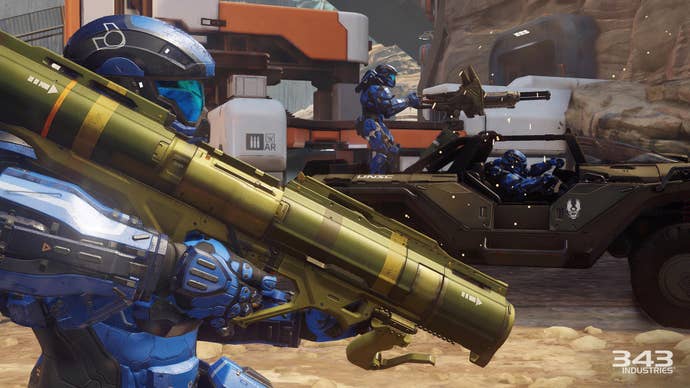
The gunplay also feels excellent. Aiming, shooting and general maneuvering are all silky-smooth, and the end result is a game that plays very well indeed. Whatever you want to do, you always feel fully in control, and with a high degree of finesse – which is just what you need in some of the more intense firefights that the game features.
Speaking of guns, there are a nice variety of them, from deadly plasma pistols through classic needle guns to sniper weapons and shotguns. I did initially find it annoying to continually run out of ammo, especially when you have a decent weapon that can waste all and sundry, but then that is, and has always been a part of Halo's shtick. You end up using whatever weapons you can get your hands on, and in a way that adds to the game's challenge. There was never a time when I completely ran out of arms. Even on the boss fights, there's usually several thoughtfully-placed containers packing a few interesting weapons that can be found nearby. All you need to do is look for them.
The campaign's structure is typically Halo. There are larger set pieces connected by cutscenes and gameplay sequences where you're working your way through landscapes, abandoned ships and other futuristic alien locales. The cutscenes are very impressive indeed – definitely up there as some of the best I've seen. In-game graphics are of a very high quality too. Most of the game is great to look at, with stunning vistas that are well rendered and lit, with a good feeling of depth and space.
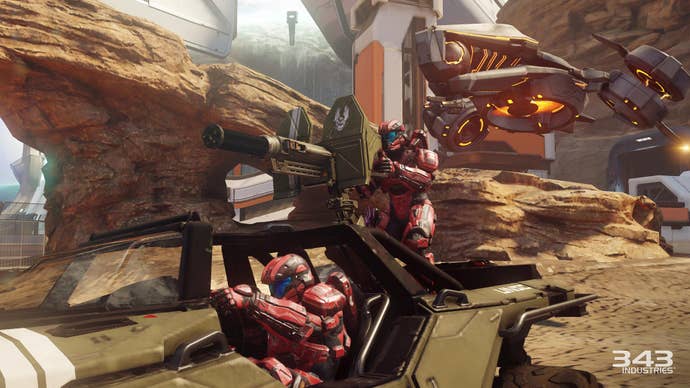
Where I have mixed feelings about the game is in its set-piece action. Don't get me wrong, I really enjoyed playing through the game, but where I found it was weak was in its variety. There are a lot of firefights where you're working your way through waves of alien forces, and as you make progress, quite a few of the latter ones feel like repeats of earlier encounters. There's definitely nothing wrong with the behavior of the enemy – they're smart and can be quite challenging to outshoot. The setting of some of the firefights can also make them a little more interesting too, but ultimately there just seemed to be just a few too many sequences where I was moving forward constantly, picking off the enemy like a shooting gallery.
Fortunately, there are missions where you can jump into vehicles and tanks, and have at it – which is really fun – but those moments are quite rare, and for the most part you're just pouring bullets into the same kinds of enemies. Even some of the boss fights feel a little one-note. Again, quite challenging, but ultimately boiling down to pouring lead and plasma into a bullet sponge that takes just a little too long to kill.
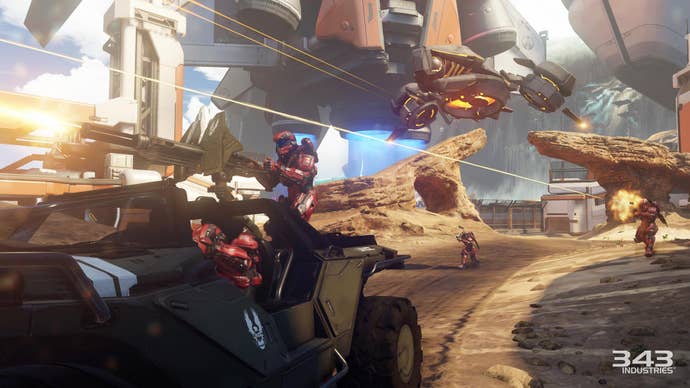
It's not a huge complaint, but I just occasionally wished for a little more variety in terms of gameplay mechanics and things to shoot at. Some missions are definitely really solid – indeed the two that I played at the Halo 5 preview event last month are without doubt the most exciting – but some just lack a creative spark, and left me wishing that they were challenging me with something more interesting than just more enemies to blast into oblivion.
Campaign is most enjoyable as a multiplayer experience, since playing co-operatively with friends is simply more fun than playing solo – especially if you dial up the difficulty level to ensure that you really have to work together to survive. But even so, like when you play solo, the action can still start to feel a little repetitive. It's just less noticeable in multiplayer mode because you're more aware of what other players are doing, and are coordinating together towards a common goal versus just taking on everything yourself.
Ultimately, Halo 5: Guardians' Campaign is robust, looks great, but it's not consistent. There are some moments of greatness – when you're taking down a skyscraper-sized Kraken late in the game, it's fantastic – but that contrasts with some shooting gallery missions that feel a little unimaginative and rote. It's definitely satisfying as an overall experience, but don't expect the game to constantly engage and wow you throughout its entire campaign.
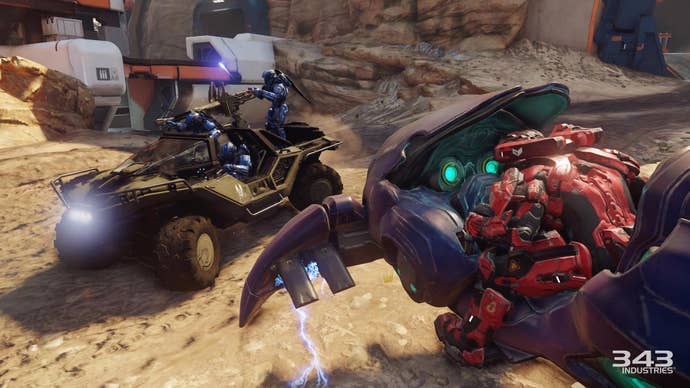
Arena
Moving on to what is essentially the spiritual successor to Halo's legacy PvP, Arena is 4 vs 4 competition set in smaller battlegrounds. Players are grouped together using a new competitive skill rating system that ranks participants on seven levels, and that should deliver good quality matchmaking across Arena's various modes, Breakout, Strongholds, Capture the Flag, Slayer, Free-for-All and SWAT. I'll follow up on this in a later article, as during the review period there were only limited amounts of players actively participating, so it was difficult to see just how good the matchmaking is.
What's for sure, however, is that Arena is very well designed and highly entertaining to play. First of all, I found the more adept and athletic Spartans rewarding and enjoyable to control. While they’re not quite up there with the likes of the Call of Duty: Black Ops III operatives in terms of sheer agility and parkour-like smoothness, they nevertheless have a current feel to them that works well in the new Arena environments.
Spartans now have unlimited sprint capability, which helps you get around the map fairly quickly (although your shields don't regenerate while you're running), and they also have thrust move capabilities that enable them to evade incoming fire if you're quick enough. They can slide too, and can also perform a Ground Pound where the character leaps into the air, hovers briefly, and then comes crashing down with a drop-in melee move that can be quite devastating to anyone who happens to be standing in close proximity. The controls are intuitive, and it doesn't take very long to incorporate the new maneuvers into your repertoire. And once you do, the end result is the fastest, most fluid, and dynamic-feeling Halo combat yet.
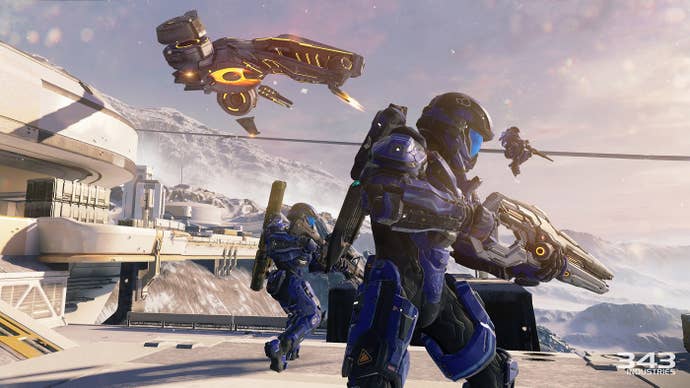
The arenas seem to have been designed with the new maneuvers in mind, and they work very well to deliver quite tight-knit combat, but with sufficient space to ratchet up the tension. By that I mean that they're big enough so that you can move around without running into an enemy every few seconds – but they're not so large that you can get lost in them for minutes at a time and not see another player.
Of all the modes, I really enjoyed Breakout most of all. This is a best-of-seven rounds game where players only have one life, with no respawns. The objective is to simply take out the other team or capture the centrally-placed flag, and while seven rounds sounds like quite a lot, both teams are essentially thrown together in a firefight that can be over very quickly – especially when one team starts to get the upper hand.
But while I liked Breakout the most, I still really enjoyed the other modes too. They're just very well suited to the Arena environments, and make for some really tense and entertaining PvP. Everything seems to be very well balanced and designed, and I wouldn't be surprised to see Arena become a popular eSport in the not-too-distant future, such is its quality.
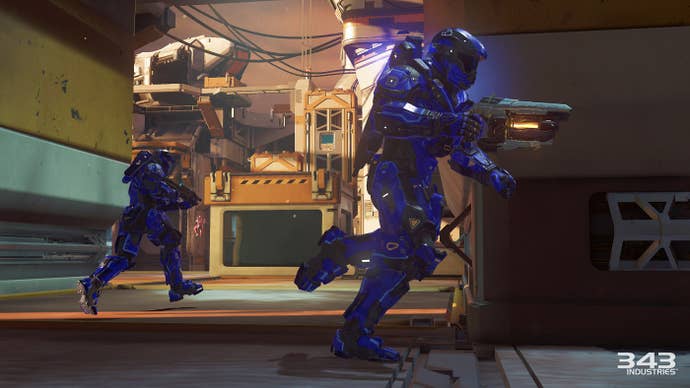
Warzone and Warzone Assault
While Arena PvP generally offers quite close-knit combat, Warzone is almost completely the opposite. This 12 vs 12 combination of PvP and PvE is played out over large-scale battlegrounds in which each team fights for control over different objectives.
As the battle rages back and forth, additional PvE forces are dropped into the fray, and they can be taken care of for bonus points. However, many of them aren't trivial, and require a small team of players to be able to take them out. That throws up some interesting tactical quandaries. Should you and your team go and take on one of these points-rich objectives, at the risk of leaving your nodes sparsely defended, or do you let the other team go for it, while you assault their nodes?
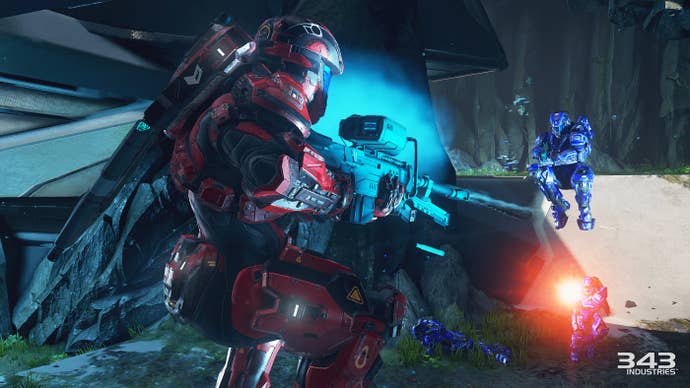
Warzone Assault is a variant of Warzone, and this is a little more straightforward - an asymmetrical battle in which one team assaults the other team's nodes with the objective to take out the core in their base. The defending team has a time limit to hold their first node, and if they're successful, the game ends. If the opposing team takes that node, however, the time limit is extended, and the battle moves onto the next node, and then the base. The action here is very frantic, with both teams essentially thrown together in one huge, protracted firefight.
Both Warzone and Warzone Assault deliver really dynamic-feeling PvP modes. Whether you're attacking a base, dealing with a PvE bonus threat, or just running around picking off stragglers from the opposing team, there always seems to be plenty of things to do. While 12 v 12 doesn't sound like a whole lot of players, especially compared to games like Star Wars: Battlefront, the maps are nicely designed to ensure that combat feels intense, and that there's very little downtime in terms of getting back into the thick of the action if you get killed.
I even liked the new REQ system. These are essentially packs of cards that you can buy with REQ points that you earn by playing both PvP game modes, acquire by completing specific objectives – or you can buy them using real money if you so desire. Inside each pack is a random selection of items, such as unlockable weapons and armor, vehicles, and cosmetic items like different assassination moves and stances. Some of these items are one-off use, while others are permanent, such as weapons with specific augments like long-range sights.
There are more than a thousand of these cards, and they come in three kinds of packs that vary in cost. The cheaper option has common, less useful cards while the more expensive pack can have rare, legendary and even mythic items. Any cards that you acquire go into a collection that you can sort and administrate whenever you want.

REQs are used in Warzones by utilizing a REQ station at one of your occupied bases. By logging into a station, you can quickly change your loadout, swap weapons or even spawn vehicles if you have the right cards – and enough energy to use them. Energy is generated throughout the battle, and, depending on the card you're using, it has a specific cost to activate. As you might imagine, the more powerful the card, the more energy you need to cash it in.
It's a system that works well, and I found I tended to have favored loadouts depending on the kind of role I wanted to play in that particular Warzone. For example, using weapons with long-range sights so I could play more of a support/pinning role versus using shorter-range assault weapons for when I wanted to help attack a well-defended node. REQs ultimately add an extra level of depth and interest to Warzones that enable you to potentially change the face of the battle by using vehicles or even loadouts to help you in certain circumstances.
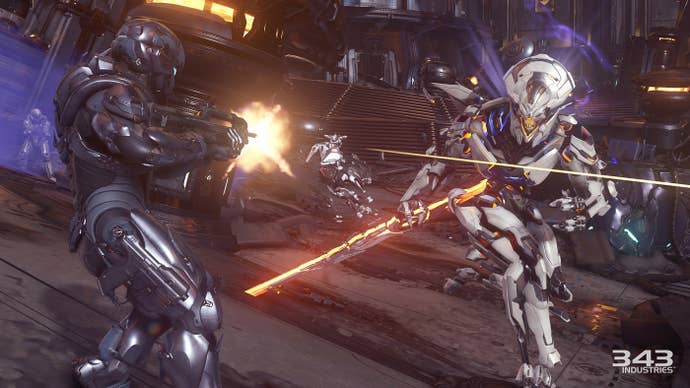
Conclusion
As a package, Halo 5: Guardians is a very solid offering. While the campaign mode has its ups and downs – and to be blunt, doesn't take particularly long to complete – it's nevertheless enjoyable, even if it can get a little relentless and repetitive at times. But its highs definitely outweigh its lows, and if you play it on the more challenging levels – and especially if you play it in co-op mode – it's entertaining enough.
But for me, the PvP side of the game is the real standout. I feel 343 Industries has designed tight, interesting and well-balanced Arenas that deliver some really intense, small-team PvP action, and done a great job in blowing out Warzone into a full-scale combat mode where there's always something to do.
Both PvP modes are consistently entertaining, and offer two different kinds of experiences. Arena is more of a "real" PvP mode where the action is tight, fast, intense and quite gripping, while Warzone is a little more inclusive in terms of giving players a broader range of activities to participate in – there are PvE targets to take down, nodes to assault and defend, and vehicle-based combat too.
All three modes combine to deliver a game that has several facets. The Campaign will keep you busy for a few days – maybe even a week or so if you really enjoy the action and want to play through it a few times on different difficulty settings and with friends. But it's in its PvP modes where Halo 5: Guardians is strongest, and that's where its long-term appeal really lies.
InterfaceWell designed to give you all the info you need, while also feeling very nicely integrated into the game.
Lasting AppealWhile the campaign mode can be completed in a few days, both PvP sides of the game offer a ton of replay value.
SoundExcellent! Great music and effects give the proceedings a very cinematic feel.
VisualsStunning-looking cutscenes and terrific in-game graphics make this one of the best-looking Xbox One games yet.
ConclusionThe campaign mode hits some great highs over its somewhat short 15-mission span, but also occasionally suffers from a lack of variety, and some boss fights that feel disappointingly one-note. Arena and Warzone offer two distinctly different flavors of PvP action, and both are solid, very well designed, and a lot of fun to play. Ultimately, campaign is a good way to ease you into the game - but it's the PvP modes that deliver the best of what this game has to offer.


